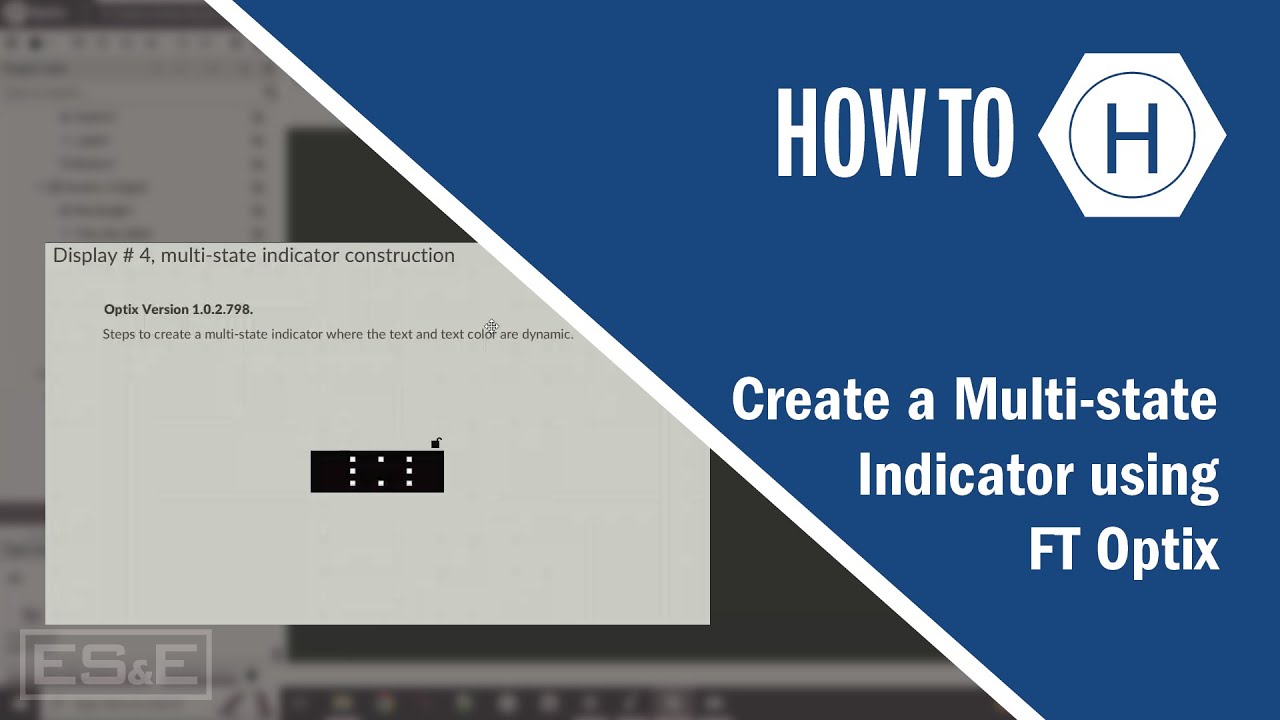Optix Basics: Out of Box Setup & Hardware Review
Summary
TLDRIn this video, Hayden Ireland, an automation specialist, provides a detailed overview of the Rockwell Optics Panel HMI and FactoryTalk Optics Studio. The video covers the differences between the Compact and Standard models, including screen sizes and token pooling for feature activation. It explains how the token pooling system customizes application sizing based on required features. Additionally, the video guides users through initial hardware setup, configuring network interfaces, and managing user access. Viewers are introduced to the essential steps for configuring and activating the HMI, ensuring optimal use of the system.
Takeaways
- 😀 The Optics Panel HMI uses FactoryTalk Optics Studio software to manage hardware setup and software features.
- 😀 The Optics Panel HMI comes in two platforms: Standard (2800S) and Compact (2800C), with differences in size and embedded runtime licenses.
- 😀 The Compact model offers 4-inch and 7-inch screen options, while the Standard model offers screens from 7 inches to 22 inches.
- 😀 Token pooling is used for licensing and allows for flexible feature allocation based on application needs, such as runtime, web clients, database connections, and drivers.
- 😀 The Standard model supports up to 11 feature tokens, while the Compact model supports up to 8 tokens.
- 😀 Rockwell provides a runtime sizing tool through the FactoryTalk Hub to help users determine the appropriate token count for their application.
- 😀 The Compact model has one Ethernet port, while the Standard model has two Ethernet ports (dual NIC) for connecting to separate networks.
- 😀 When setting up the hardware, users must press the device configuration button and enter a default admin password to configure the system.
- 😀 The default password must be changed during the initial setup to meet security requirements (minimum 8 characters with letters, numbers, and special characters).
- 😀 If the configuration button is not pressed on startup, users will encounter a 'no application found' message and need to reboot the system.
- 😀 The FactoryTalk Optics page allows users to configure system startup settings, assign IP addresses to Ethernet ports, and manage user access to configuration pages.
Q & A
What is the main focus of this video?
-The video focuses on reviewing the hardware and out-of-box setup for the Optics panel HMI, which uses FactoryTalk Optics Studio software. It also covers software features, requirements, and key information for programming the HMI.
What are the two main platforms for the Optics panel HMI?
-The two main platforms for the Optics panel HMI are the standard (2800S) and compact (2800C) versions.
What is the key difference between the compact and standard versions of the Optics panel?
-The primary differences are the size options and the embedded runtime license. The compact version comes in 4-inch and 7-inch screen sizes, while the standard version offers sizes from 7 inches to 22 inches. Additionally, the compact version supports 8 feature tokens, while the standard version supports 11.
How does the token pooling system work in the Optics panel?
-Token pooling allows you to size your application based on required features, such as local runtime, web client count, external database connections, communications drivers, and application functionality. Each of these features has a specific token count, and the total token pool determines the functionality available.
What is the purpose of the FactoryTalk Hub in relation to the Optics panel?
-FactoryTalk Hub is a central location for all Rockwell software and cloud offerings, where you can access tools like the runtime sizing tool, which helps in sizing your application based on the token count.
What happens if the application requires more than 11 tokens?
-If your application requires more than 11 tokens, you can upgrade the embedded runtime activation to a higher count of up to 15 tokens.
What is the difference in networking capabilities between the compact and standard Optics panels?
-The compact Optics panel has one Ethernet port, while the standard version features two Ethernet ports (dual NIC), allowing for connections to two separate networks. This is useful for separating local and plant networks or enabling remote access.
What is the default username and password when setting up the hardware for the first time?
-The default username and password for initial setup are both 'admin'. After entering these credentials, you will be required to change the default password.
What should you do if you see the 'No Application Found' screen after startup?
-If you encounter the 'No Application Found' screen, you need to reboot the HMI and press the device configuration button to proceed with the setup.
What is the importance of checking the 'Run FactoryTalk Application Update Service at System Startup' checkbox?
-Ensuring that this checkbox is checked will make sure that the application runs when it's downloaded. If unchecked, the screen will not run an application after startup.
What is the function of the 'Interfaces' page in the device configuration?
-The 'Interfaces' page allows you to set the IP addresses for each of the two Ethernet ports on the panel. It's important to ensure that these ports are not on the same network, as the panel does not support a ring topology.
What is the purpose of the 'Users' page in the device configuration?
-The 'Users' page is where you can assign access to the configuration pages, manage the admin account, and change the default admin password. It is separate from the user security settings defined in the Optics application.
Outlines

This section is available to paid users only. Please upgrade to access this part.
Upgrade NowMindmap

This section is available to paid users only. Please upgrade to access this part.
Upgrade NowKeywords

This section is available to paid users only. Please upgrade to access this part.
Upgrade NowHighlights

This section is available to paid users only. Please upgrade to access this part.
Upgrade NowTranscripts

This section is available to paid users only. Please upgrade to access this part.
Upgrade Now5.0 / 5 (0 votes)





